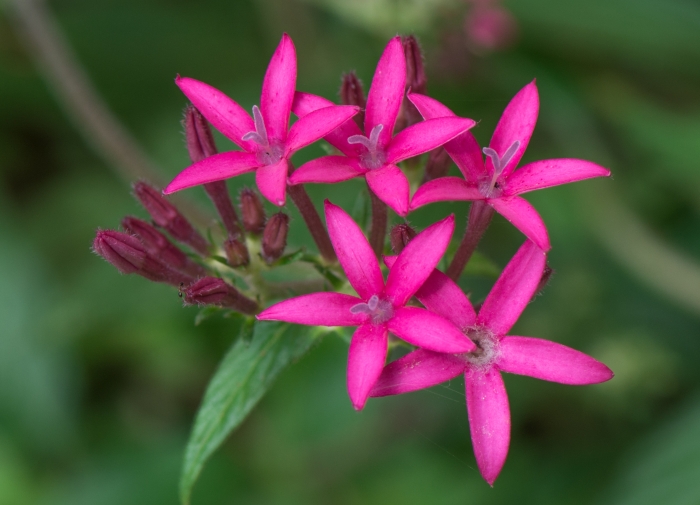Egyptian Starcluster
(Pentas lanceolata)
Egyptian Starcluster (Pentas lanceolata)
/
/

Manoj Karingamadathil
CC BY-SA 4.0
Image By:
Manoj Karingamadathil
Recorded By:
Copyright:
CC BY-SA 4.0
Copyright Notice:
Photo by: Manoj Karingamadathil | License Type: CC BY-SA 4.0 | License URL: http://creativecommons.org/licenses/by-sa/4.0/ | Rights Holder: Manoj Karingamadathil | Publisher: iNaturalist | Date Created: 2016-03-28T18:30Z |

































































Estimated Native Range
Summary
Pentas lanceolata, commonly known as Egyptian starcluster, is a perennial herb native to tropical and subtropical regions of Africa and Yemen, where it thrives in open woodlands and savannah environments. It typically grows to a height and width of 1-2 feet (30-60 cm). The plant forms a bushy clump of lance-shaped leaves and is well-known for its clusters of star-shaped flowers that come in a variety of colors including yellow, pink, purple, red, and white. These vibrant blooms appear profusely throughout the spring, summer, and fall, attracting pollinators such as butterflies and hummingbirds.
Egyptian starcluster is celebrated for its continuous flowering and ease of maintenance, making it a popular choice for butterfly gardens, borders, and container plantings. It thrives in full sun but can tolerate part shade, and while it prefers medium amounts of water, it is somewhat drought-tolerant once established. Well-drained soil is essential to prevent root rot. Regular deadheading can encourage more blooms. In regions with frost, it is often grown as an annual or brought indoors during the winter.CC BY-SA 4.0
Egyptian starcluster is celebrated for its continuous flowering and ease of maintenance, making it a popular choice for butterfly gardens, borders, and container plantings. It thrives in full sun but can tolerate part shade, and while it prefers medium amounts of water, it is somewhat drought-tolerant once established. Well-drained soil is essential to prevent root rot. Regular deadheading can encourage more blooms. In regions with frost, it is often grown as an annual or brought indoors during the winter.CC BY-SA 4.0
Plant Description
- Plant Type: Subshrub, Shrub
- Height: 1-2 feet
- Width: 1-2 feet
- Growth Rate: Moderate
- Flower Color: Yellow, Pink, Purple, Red, White
- Flowering Season: Spring, Summer, Fall
- Leaf Retention: Evergreen
Growth Requirements
- Sun: Full Sun, Part Shade
- Water: Medium
- Drainage: Medium
Common Uses
Bee Garden, Bird Garden, Border Plant, Butterfly Garden, Deer Resistant, Drought Tolerant, Hummingbird Garden, Low Maintenance, Potted Plant, Rabbit Resistant, Showy Flowers, Street Planting
Natural Habitat
Tropical and subtropical regions of Africa and Yemen, open woodlands and savannah environments
Other Names
Common Names: Egyptian Star Cluster
Scientific Names: , Pentas lanceolata, Mussaenda luteola, Pentas lanceolata var. lanceolata, Manettia lanceolata, Mussaenda aegyptiaca, Mussaenda lanceolata, Neurocarpaea lanceolata, Ophiorrhiza lanceolata, Pentanisia oncostipula
GBIF Accepted Name: Pentas lanceolata (Forssk.) Deflers